Past Graduate Research Fund Awardees
2021
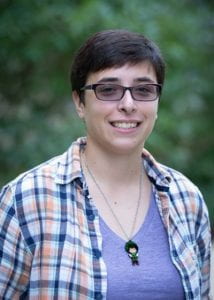 Tailoring Climate Adapted Forests to Bedrock Conditions
Tailoring Climate Adapted Forests to Bedrock Conditions
Denise Alving
Denise Alving is a Ph.D. student in the Forest Resources department at Penn State. Her research is at the intersection of ecology and geology, seeking to understand how climate adapted forest plantings can be targeted to match nutrient availability in soils overlying different lithologies. The CLD award will fund the planting and fencing of climate adapted forest plots on shale and sandstone bedrocks in Stone Valley.
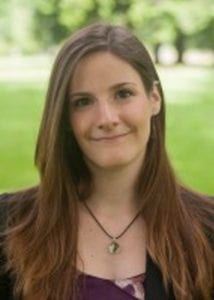 Shifting Green Stormwater Infrastructure Designs: Water Quality Performance Evaluation of Off-line Flow Bypass Systems
Shifting Green Stormwater Infrastructure Designs: Water Quality Performance Evaluation of Off-line Flow Bypass Systems
Jessica Fegley
Jessica Fegley is a Master of Science in Landscape Architecture (MSLA) student within the College of Arts and Architecture. Her research focuses on how green stormwater infrastructure design can alter how polluted runoff flows through these systems and impact their ability to sequester and treat pollutants. The CLD grant will support lab analysis of soil, plant matter, and collected runoff samples from sets of laboratory-scale bioretention systems to determine how pollutants such as phosphorous, hydrocarbons, and sediments are impacted by varying flow configurations. It is her hope to incorporate the knowledge gained from this research into sustainable urban design to better protect natural ecosystems and enhance our built environments.
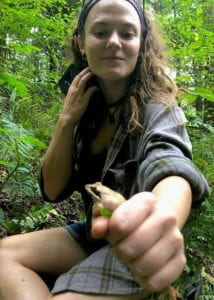 The effects of fire severity, seed source, and shrub cover on tree regeneration after wildfires in Lassen Volcanic National Park, California
The effects of fire severity, seed source, and shrub cover on tree regeneration after wildfires in Lassen Volcanic National Park, California
Dani Niziolek
Dani Niziolek is a master’s student in the Department of Geography, specializing in fire ecology under Dr. Alan Taylor. I study postfire conifer regeneration in a dry conifer forest in northern California in collaboration with the National Parks Service at Lassen Volcanic NP. The goal of the project is to identify the drivers of postfire regeneration within the park to inform management strategies for facilitating forest recovery through the application of prescribed fire. The CLD award money will go toward my travel and field work expenses.
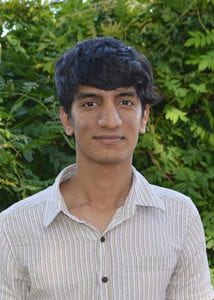 A Tangled Web: water scarcity, rural development, and the reconfiguration of watershed management in western India
A Tangled Web: water scarcity, rural development, and the reconfiguration of watershed management in western India
Karan Misquitta
Karan Misquitta is a Ph.D. candidate in the Department of Geography. His research focuses on policy responses to water scarcity and groundwater depletion in rural India. He has a B.A. in economics from St. Xavier’s College, and a M.A. in development studies from the TATA Institute of Social Sciences, both located in Mumbai, India. The CLD grant will support fieldwork in New Delhi and Mumbai to interview and interact with policymakers to understand how the policy process unfolds in India.
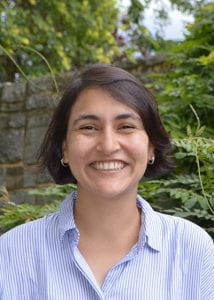 An island entire of itself: energy infrastructures and the making of Mumbai’s electricity supply
An island entire of itself: energy infrastructures and the making of Mumbai’s electricity supply
Saumya Vaishnava
Saumya Vaishnava is a Masters and Ph.D. student in the Department of Geography. She is interested in studying energy infrastructure projects and the manner in which they transform socio-political and physical elements of the landscape, as well as relationships between them. Prior to joining Penn State, Saumya worked on energy policy and governance issues in India. She has a bachelor’s degree in Economics from Saint Xavier’s College, Mumbai and a master’s degree in Economics and Public Policy from Sciences Po, Paris.
2020
 Tropical rainforest dynamics during four glacial to interglacial transitions in a biodiversity hotspot on Sulawesi, Indonesia
Tropical rainforest dynamics during four glacial to interglacial transitions in a biodiversity hotspot on Sulawesi, Indonesia
Adam Benfield
Adam Benfield is a Ph.D. student in geosciences. He studies vegetation changes using pollen, fungal spores, and microcharcoal found in sediment cores taken from Lake Towuti, Indonesia, focusing on the abrupt warming periods prior to four interglacial periods. The CLD grant will support summer travel to the LacCore Facilty at the University of Minnesota and Australian National University in Canberra, Australia, to study pollen samples and conduct fungal spore and microcharcoal counting.
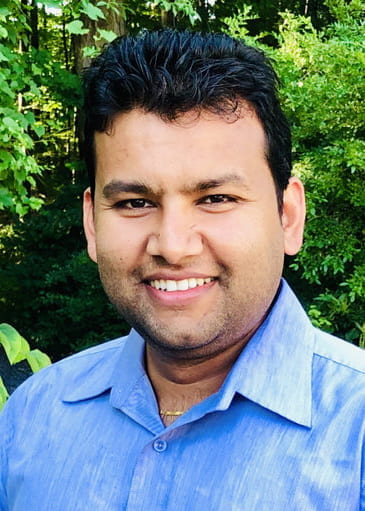 Demand for prescribed fire on private forestlands in Pennsylvania
Demand for prescribed fire on private forestlands in Pennsylvania
Arun Regmi
Arun Regmi is a Ph.D. student in forest resources. He studies the use of prescribed fire as a management tool in Pennsylvania forests and forest landowner interest in prescribed fire. The CLD grant will support travel to a national conference where Regmi will present the findings of a study on landowners’ willingness to implement prescribed fire on private forestlands in Pennsylvania.
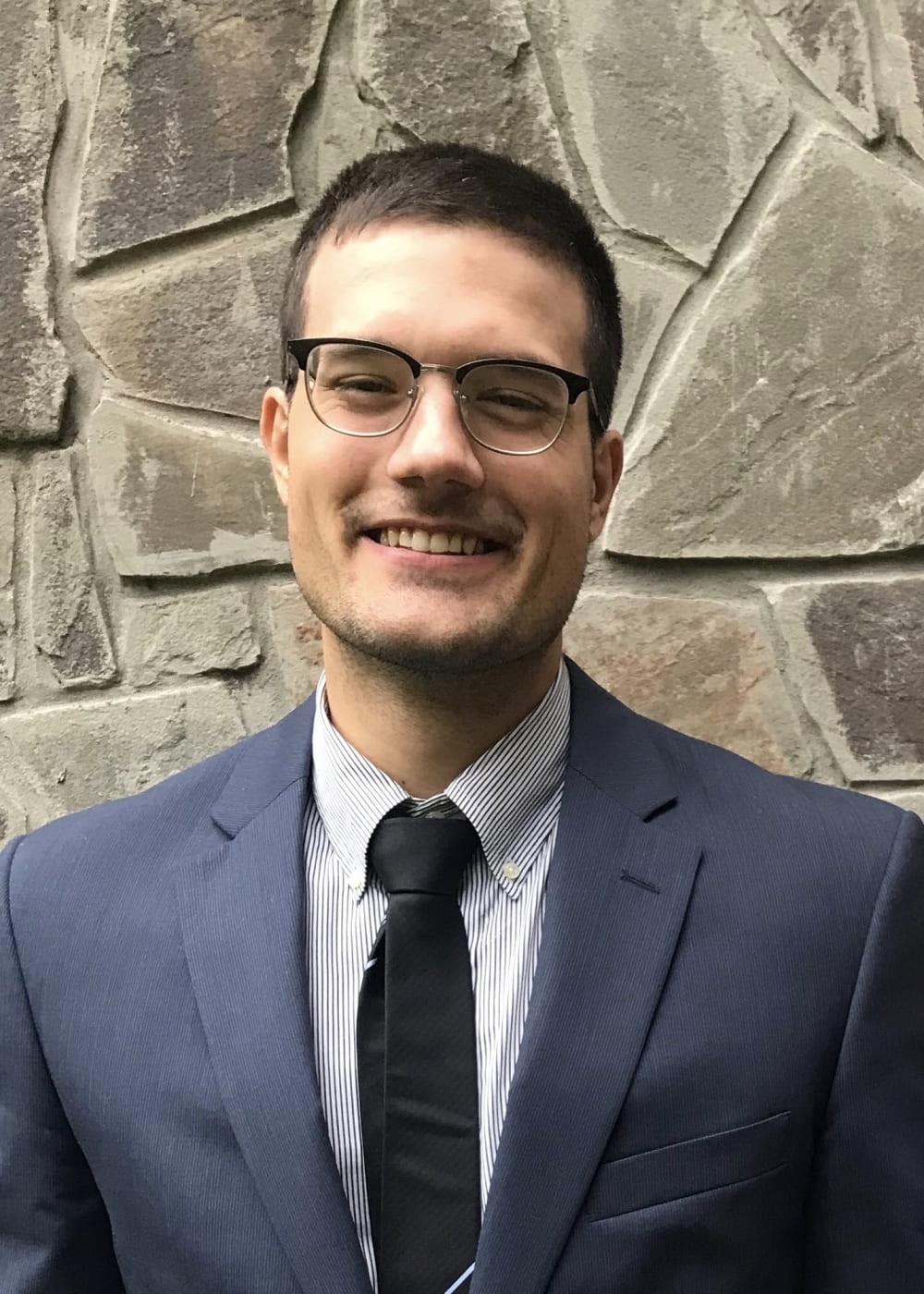 Millimeter-scale distribution of phosphorous in the topsoil may help us understand landscape-scale phosphorous losses
Millimeter-scale distribution of phosphorous in the topsoil may help us understand landscape-scale phosphorous losses
Curt McConnell
Curt McConnell is a Ph.D. candidate in ecology and biogeochemistry. He studies the use of phosphorous in agricultural practices and its ecological effects in the Chesapeake Bay watershed. The CLD grant will support a study of phosphorous levels in the topsoil of conventionally tilled and no-till farmland in the Chesapeake Bay watershed.
 Application of virtual reality for improving systems thinking among local agency practitioners: A case study in Spring Creek Watershed, USA
Application of virtual reality for improving systems thinking among local agency practitioners: A case study in Spring Creek Watershed, USA
Elham (Ellie) Nasr-Azadani
Elham Nasr-Azadani is a Ph.D. candidate in geography. She studies landscape visualization and the use of virtual reality technology in competency-based sustainability education. The CLD grant will support a study of the effectiveness of landscape visualization and virtual reality technology in the competency-based education and training of stakeholders in the Spring Creek watershed. The study will also investigate the technology’s ability to affect pro-environmental behaviors in stakeholders.
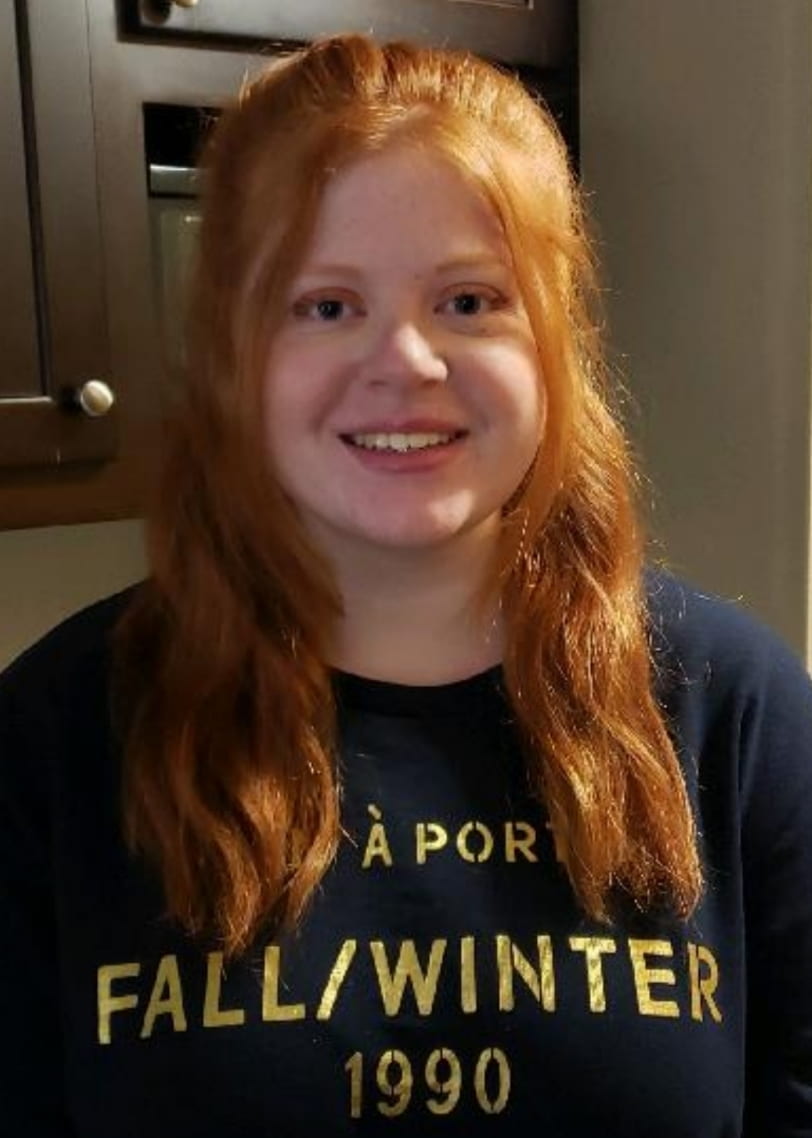 Day comes to the Cumberlands: Ecotourism as a redevelopment strategy in southeastern Kentucky
Day comes to the Cumberlands: Ecotourism as a redevelopment strategy in southeastern Kentucky
Hannah Caudill
Hanna Caudill is a master’s student in geography. She studies renewable energy policy and the potential for the renewable energy industry to replace the declining coal mining industry in the Appalachian Mountain region. The CLD grant will support travel to Daniel Boone National Forest, Cumberland Gap National Historical Park, and surrounding communities in Kentucky to understand the politics and administrative techniques involved in maintaining and promoting ecotourism sites and to determine local attitudes and the potential economic benefits of ecotourism to communities.
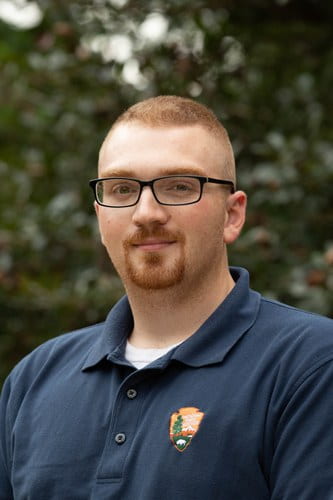 Physical channel response to improved aquatic organism passage: Academic and educational opportunities for interdisciplinary adaptive watershed management
Physical channel response to improved aquatic organism passage: Academic and educational opportunities for interdisciplinary adaptive watershed management
Jonathon Chester
Jonathon Chester is a master’s student in forest resources. He studies the long-term geomorphic impact of roads in forested landscapes using geospatial technology. The CLD grant will help finance the one-month rental of a terrestrial LiDAR scanner to create a geocache of a road-stream crossing restoration project in central Pennsylvania. The geocache will support the long-term monitoring of the site by researchers and citizen scientists and provide insights for science-based solutions for future crossing restoration projects.
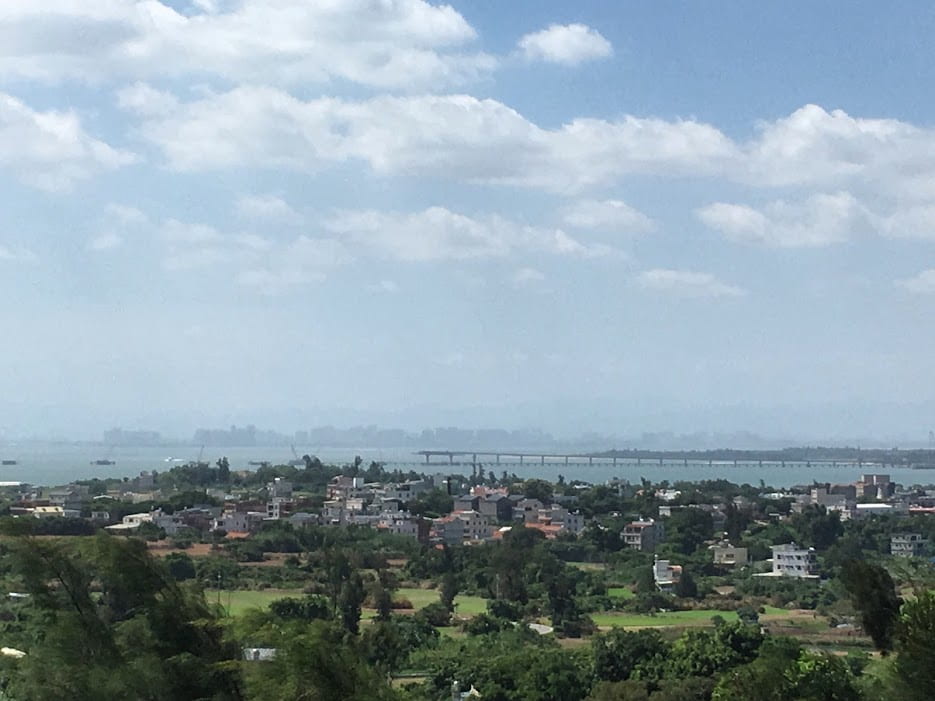 Exploring the water-land-use nexus in the Kinmen island
Exploring the water-land-use nexus in the Kinmen island
Mei-Huan Chen
Mei-Huan Chen is a Ph.D. student in geography. She studies the politics of water resources and infrastructure in China and Taiwan. The CLD grant will support field research in the Kinmen Islands, Taiwan, to better understand the relationship between land-use practices and water resources. The research has the potential to inform water resource policy recommendations.
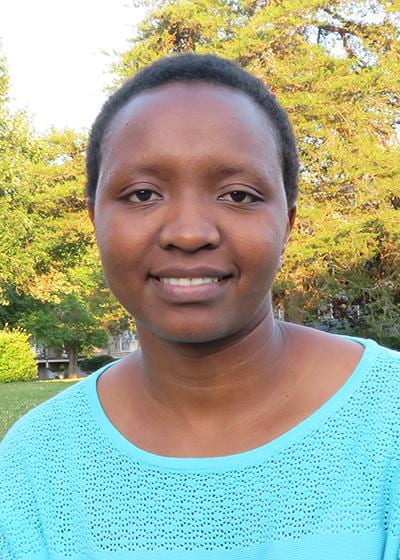 Climate change, land-use/cover dynamics, and landscape productivity in the agropastoral system of Narok, Kenya
Climate change, land-use/cover dynamics, and landscape productivity in the agropastoral system of Narok, Kenya
Susan Kotikot
Susan Kotikot is a Ph.D. student in geography. She studies landscape dynamics within cropland and rangeland ecosystems in Kenya. The CLD grant will support the purchase of time series climate observation data for stations based in and around Narok, Kenya, and high-resolution multispectral imagery that Kotikot will use to track cropping patterns in relation to climate change and for validating land use and land cover products.
 Is shrub expansion into grassland pulled or pushed? Combining models and experiments to study the dynamics of woody encroachment
Is shrub expansion into grassland pulled or pushed? Combining models and experiments to study the dynamics of woody encroachment
Trevor Drees
Trevor Drees is a Ph.D. student in ecology. He studies the encroachment of shrubs and woody plants into adjacent grasslands. Specifically, he is researching the encroachment dynamics of the creosotebush at Sevilleta National Wildlife Refure in central New Mexico. The CLD grant will provide funding support for Drees to give an invited talk in an organized symposium on spatial ecology in the Anthropocene at the 2020 ESA Annual Meeting in Salt Lake City, Utah.
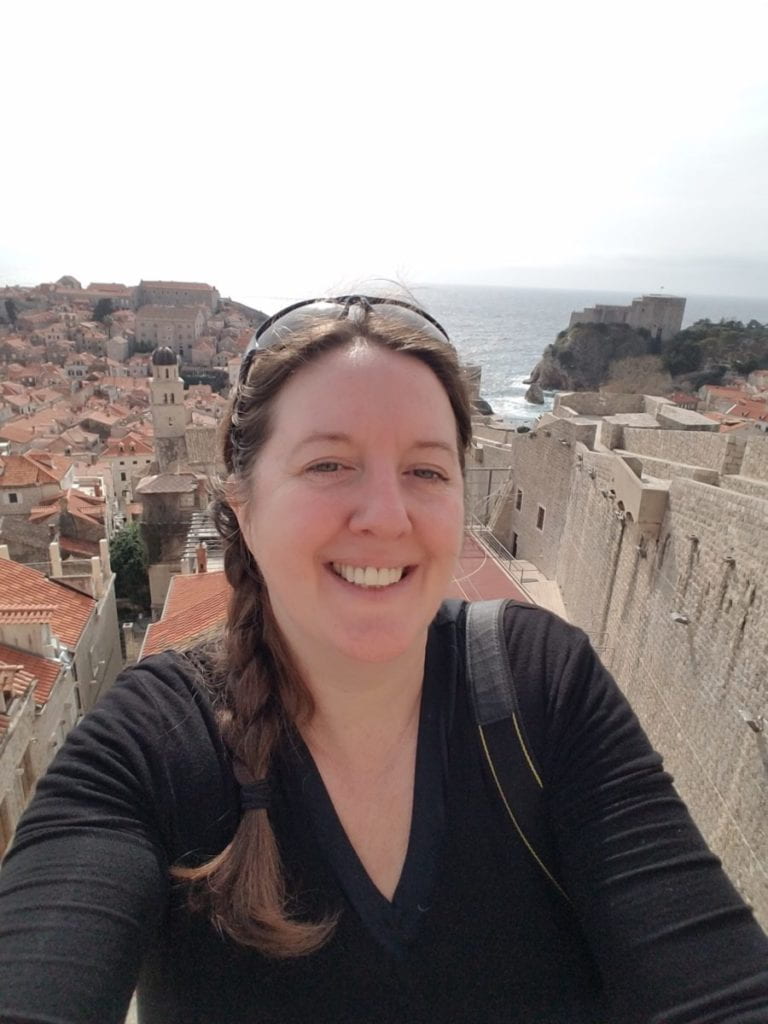 Understanding wildlife dynamics using integrated persistent geospatial sensor networks in South Africa
Understanding wildlife dynamics using integrated persistent geospatial sensor networks in South Africa
Wendy L. Zeller Zigaitis
Wendy L. Zeller Zigaitis is a Ph.D. student in geography. She studies new approaches to the use of persistent geospatial data in conservation research and human-wildlife conflict, including wildlife trafficking. The CLD grant will support an initial site visit to the Nelson Mandela University satellite campus in George, South Africa, and surrounding game preserves to establish data sharing and project coordination efforts with collaborating partners and gain insight into local landscape issues.
2019
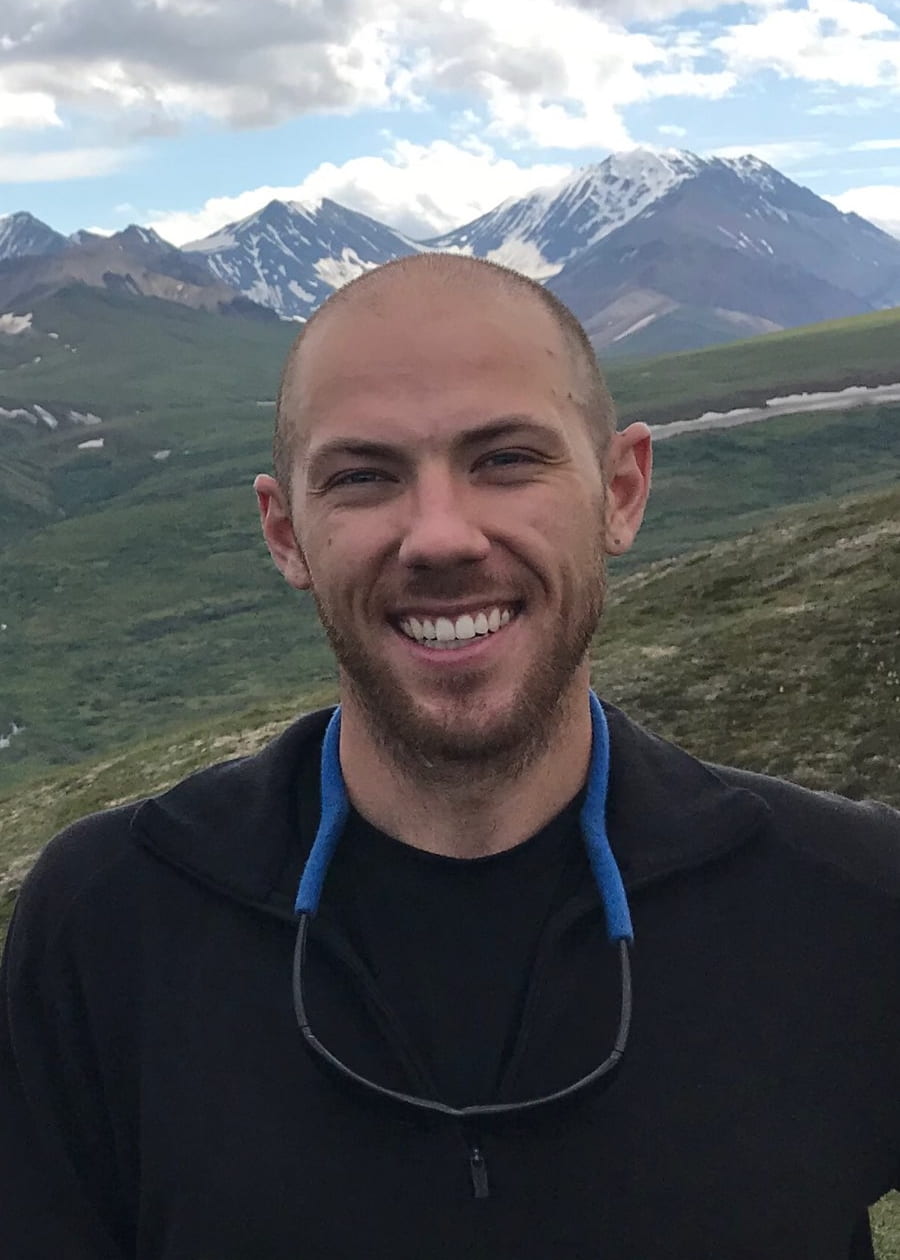 Training dendrochronologists: A workshop approach to determine the drivers of forest stress in the greater Yellowstone ecosystem
Training dendrochronologists: A workshop approach to determine the drivers of forest stress in the greater Yellowstone ecosystem
Cody Dems
Cody Dems is a second-year master’s student in forest resources at Penn State. The CLD grant will allow Dems to attend the National Science Foundation-funded North American Dendroecological Fieldweek (NADEF) in Cody, Wyoming. During NADEF, Dems will examine the interaction of climate change with various forest disturbances to address landscape-scale shifts in tree species distribution and growth in the Greater Yellowstone Ecosystem and build relationships with national and international researchers.
 Pesticides and agrobiodiversity in emerging market production systems in the High Atlas Mountains (Morocco)
Pesticides and agrobiodiversity in emerging market production systems in the High Atlas Mountains (Morocco)
Zachary Goldberg
Zachary Goldberg is a second-year master’s student in geography. He studies the determinants of agrobiodiversity and pesticide use promoted indirectly by government policy in Morocco. The CLD grant will allow Goldberg to attend Pesticide Politics in Africa in Nairobi, Kenya, and support outreach and networking efforts in Africa to disperse and integrate research findings with the broader work being done on pesticides in Africa.
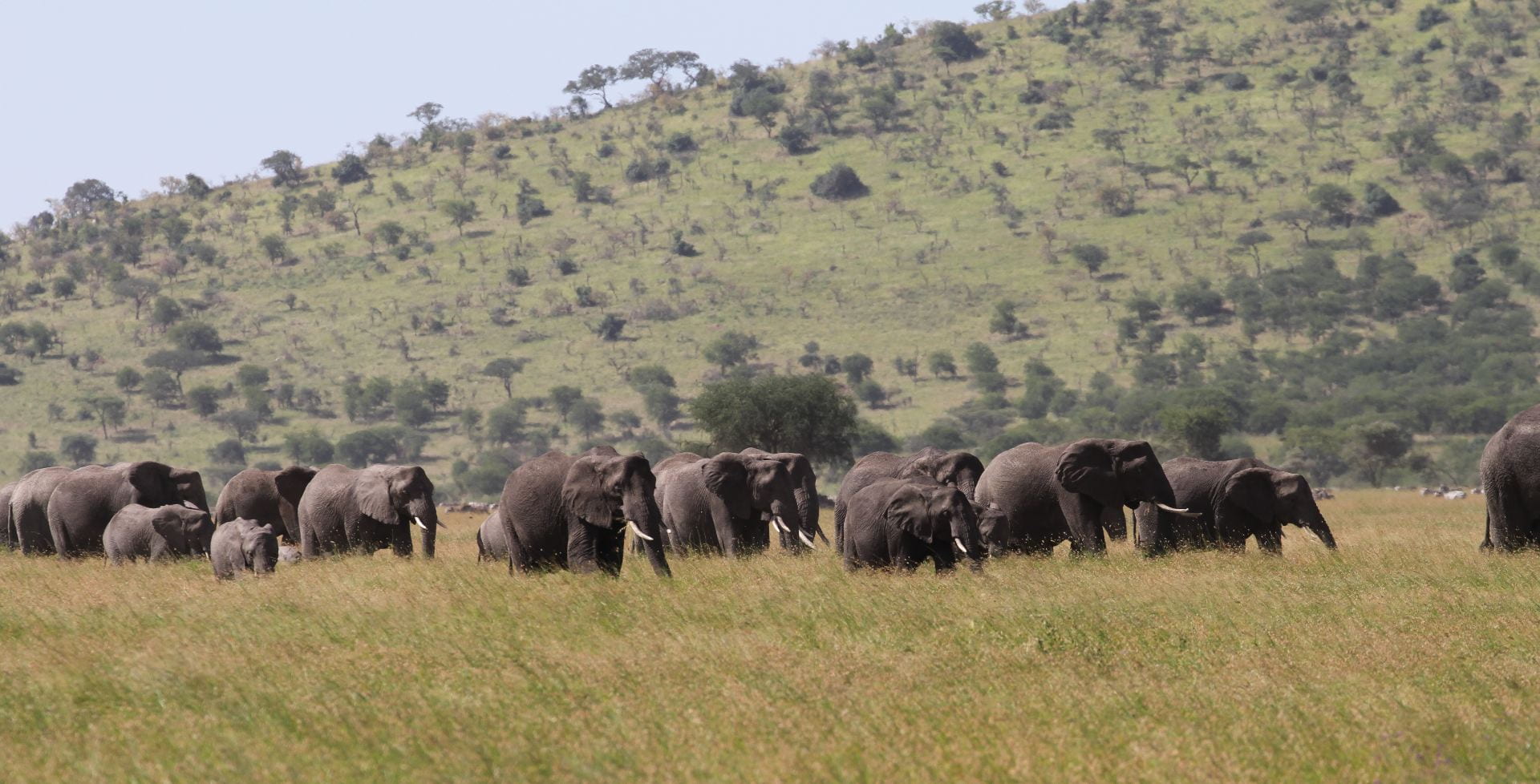 Human-wildlife interactions, land use change and livelihoods in shared landscapes
Human-wildlife interactions, land use change and livelihoods in shared landscapes
Grace Malley
Grace Malley is a Ph.D. student in geography. She studies human-wildlife interactions and their outcomes on landscape sustainability. The CLD grant will allow Malley to research human-elephant conflicts in the Kilombero Valley in Tanzania and conduct field work for three months in Africa. Malley will use the research to better understand the underlying mechanisms for human-elephant conflicts and design mitigation measures that secure livelihoods while promoting conservation.
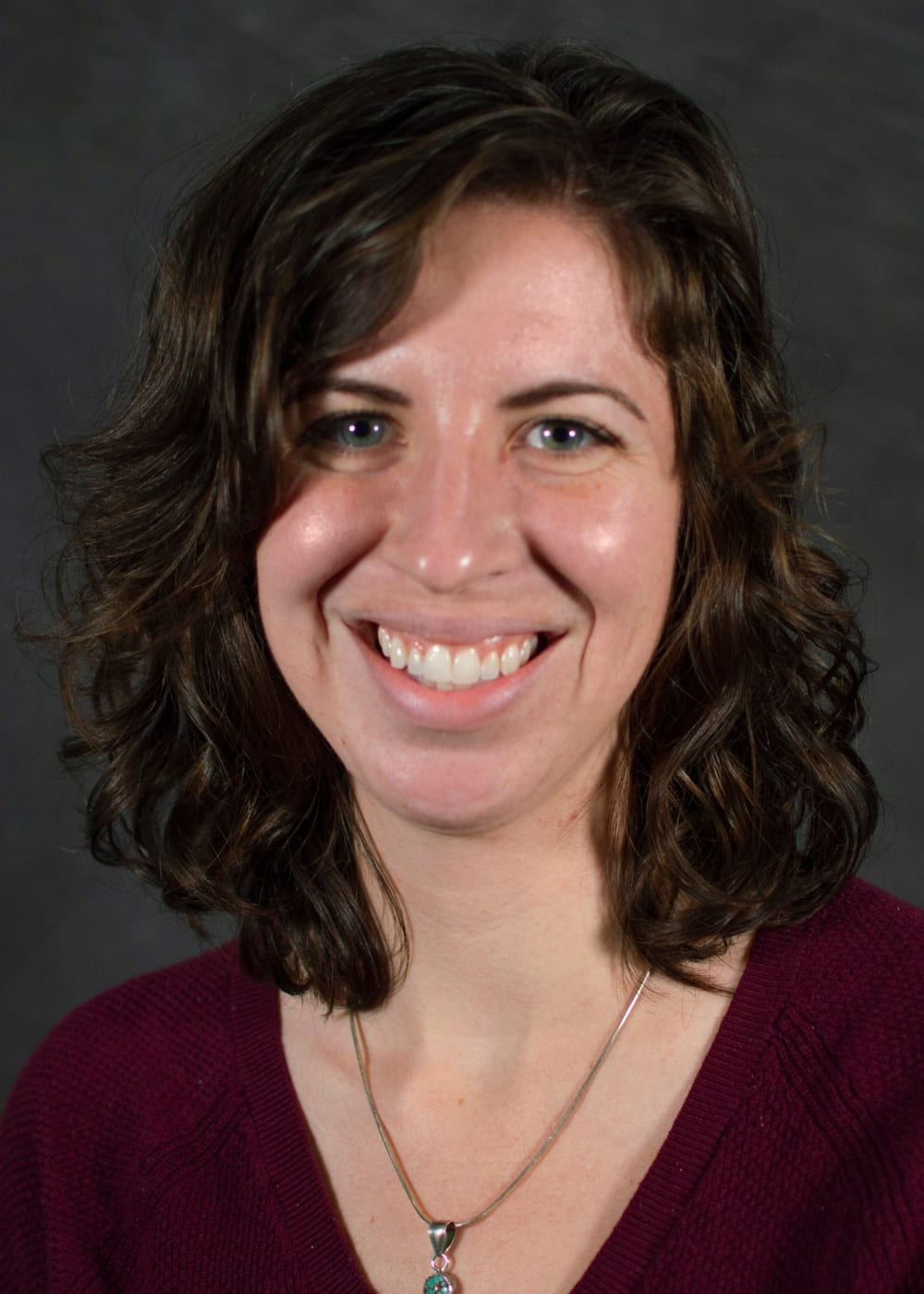 Linking context to post-fire forest resilience in the western United States
Linking context to post-fire forest resilience in the western United States
Jamie Peeler
Jamie Peeler is a Ph.D. candidate in geography. She studies wildfires and forest resilience in the western United States. The CLD grant will support a 7-week field season in Bridger-Teton National Forest, Wyoming, for Peeler and two undergraduate field assistants. During the field season, Peeler will collect field data to better understand context, disturbance, and resilience within post-fire landscapes in the western United States.
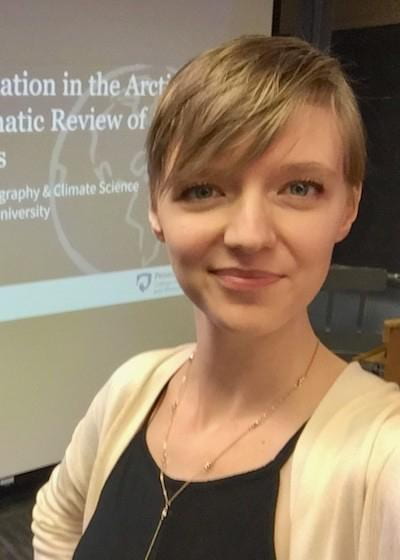 The roles of geography and risk perception in effective, sustainable adaptation
The roles of geography and risk perception in effective, sustainable adaptation
Michelle Ritchie
Michelle Ritchie is a Ph.D. candidate in geography and climate science. She studies how climate change affects landscapes and societies. Ritchie is interested in learning if individuals who live in extreme climates are more prepared to handle rapid and unprecedented climatic changes than individuals living in temperate regions, and what constitutes effective and sustainable climate adaptation. The CLD grant will allow Ritchie to spend a two-week preliminary field site visit in the Westfjords region of Iceland.
 Landscapes of exclusion: Mexicali’s tolerance zone over the course of a century
Landscapes of exclusion: Mexicali’s tolerance zone over the course of a century
Vivian Deidre Rodriguez Rocha
Vivian Deidre Rodriguez Rocha is a Ph.D. student in geography and women’s gender and sexuality studies. She studies the connections between long-term processes of landscape diversification and the marginalization of outcast populations in Mexicali, Mexico. The CLD grant will support a two-week field season at the Instituto de Investigaciones Culturales-Museo of Baja California’s Autonomous University and the Mexicali tolerance zone.
 Economic optimization models as a novel approach to secure freshwater sustainability in the Western Ghats of India
Economic optimization models as a novel approach to secure freshwater sustainability in the Western Ghats of India
Vishnupriya Sankararaman
Vishnupriya Sankararaman is a Ph.D. student in ecology. She studies the effects of habitat alteration on freshwater flora and fauna in the Western Ghats of India. The CLD grant will support a three-month field season in Valparai, India. Sankararaman will study how current land management practices influence amphibian community structure. She will also conduct interviews with landowners and managers to determine their attitudes toward conservation and their willingness, motivations, and incentives to modify management practices and implement riparian conservation measures.
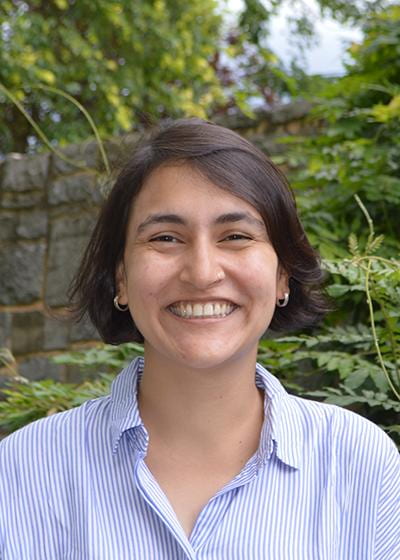 Fragile grounds: Landslides and environmental narratives in the Indian Himalayas
Fragile grounds: Landslides and environmental narratives in the Indian Himalayas
Saumya Vaishnava
Saumya Vaishnava is a second-year master’s student in geography. She studies how the competing environmental narratives around hydropower projects and the risk of landslides have transformed the Himalayan landscape in India. The CLD grant will support a six-week field season in Uttarakhand, India, and participation in a workshop on political ecology and science and technology studies at Wageningen University and Research, Netherlands.
Spring 2018
 Modeling Prescribed Fire Effects and Vegetation Dynamics in Pitch Pine and Mixed-Oak Forests
Modeling Prescribed Fire Effects and Vegetation Dynamics in Pitch Pine and Mixed-Oak Forests
Anthony Zhao
Can we use fire to turn back time, bring forests closer to their original state, and maintain these ecosystems over the long term?
Previous studies show mixed results depending upon when, how often, how severe and in what season a prescribed burn was conducted. Anthony Zhao, a master’s degree student in geography, in the College of Earth and Mineral Sciences, is using computer model simulations to try to get a clearer answer to this question with his master’s research project, supported by a Center for Landscape Dynamics Graduate Award.
Zhao’s project is unique in that it is primarily computer model simulations and little or no fieldwork. He is using forest data collected by various partner agencies such as the U.S. Forest Service, the National Park Service, the New Jersey Forest Service, the Pennsylvania DCNR Bureau of Forestry and the Pennsylvania Game Commission. Those agencies have provided forest plot data for sites across Pennsylvania, southern New Jersey and the Virginia Appalachians. The databases include information such as tree species, diameter, height, mortality and damage, fuel load, observed burn effects, and more.
All that information will be loaded into the Forest Vegetation Simulator (FVS), a tree-growth modeling program routinely used by forest researchers. An add-on for the model, the Fire and Fuels Extension (FFE), will also be used to simulate and model prescribed burning.
To take a break from all the database work, Zhao has also helped conduct field surveys for the Firescapes in the Mid-Atlantic project. That involved going to forests and outdoor recreation areas to ask random members of the public there to complete a short survey on how they use forest areas and their perceptions of prescribed burning. “That was a good experience,” Zhao said. “It helped me to understand how my work could impact people’s lives, too.” Read more about the project
 Pesticides and Agrobiodiversity in Emerging Market Production Systems in the High Atlas Mountains (Morocco)
Pesticides and Agrobiodiversity in Emerging Market Production Systems in the High Atlas Mountains (Morocco)
Zachary Goldberg
How are development and globalization affecting the livelihoods of indigenous communities in a remote mountain region of Morocco? Zachary Goldberg, a master’s degree student in geography, in the College of Earth and Mineral Sciences, is using a qualitative case study approach to try to describe how adapting their traditional agricultural practices to grow more apples in response to market demands has changed life for the Amazigh people for better or for worse.
One way it might be worse is the increased use of pesticides that apple cultivation requires. “When I met with leaders in the community, they were concerned about the impacts of pesticides,” Goldberg said.
Pesticide use around the world has been linked to many problems. For one, pesticides harm human health, especially when protective gear is not used. Exposure can cause rashes, breathing problems, as well as other more serious and chronic health problems. “Among the Amazigh some protect some don’t,” Goldberg said. “There is little training on safety and mixed awareness of the health impacts.”
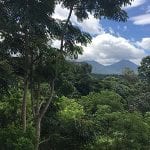 (De-)constructing Conservation Corridors in Human-Environment Landscapes of the Mesoamerican Dry Tropics
(De-)constructing Conservation Corridors in Human-Environment Landscapes of the Mesoamerican Dry Tropics
Ruchi Patel
As a Master’s student in Geography in the College of Earth and Mineral Sciences, Ruchi Patel studies the discursive, policy, and planning frameworks surrounding the adoption of biological corridors as an integrated model of biodiversity conservation and development in El Salvador.
Collaborating with a conservation NGO based in the region, Paso Pacifico, Patel is using a mixed methods approach—document analysis, key informant interviews, and spatial data analysis—to investigate the potential for establishing tropical dry forest corridors along Mesoamerica’s Pacific slope.
“Through my work on this project, I hope to provide insight into the successes and challenges of translating corridor policy into action in El Salvador and elsewhere in the region,” she said. “The Center for Landscape Dynamics’ focus on landscape studies is foundational for my work; corridors are a landscape-level concept with important applications in conservation and landscape management. I am extremely grateful for the Center’s support, which allowed me to travel to El Salvador over the summer to conduct fieldwork.”
Fall 2015

Spatial Heterogeneity in Phenology as a Driver of Herbivore Movement
Christian John
Christian John is a second-year Master’s student in Penn State’s ecology graduate program, working under Dr. Eric Post. He studies climate change influences on caribou migration in low-arctic Greenland, with particular emphasis on herbivore and plant phenology. His work combines long-term observational data with low-level and satellite-derived remote sensing. Because lightweight unmanned aerial photography is relatively inexpensive and can be easily incorporated in remote settings, he has begun to explore novel imaging techniques in the field for caribou demographic surveys and plant phenological measurements. The CLD award will finance materials for advanced aerial data collection, including platforms and high-quality sensor technology.
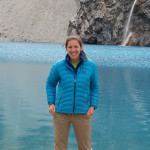 Predicting the spread of cheatgrass (Bromus tectorum) and its impact on forest vulnerability in the Greater Yellowstone Ecosystem
Predicting the spread of cheatgrass (Bromus tectorum) and its impact on forest vulnerability in the Greater Yellowstone Ecosystem
Jamie Peeler
Jamie Peeler graduated with a B.S. in Biology from Duke University in 2012. She worked as a field technician on multiple research projects both domestically and abroad after graduation, including in northern Minnesota, Equatorial Guinea, Florida, and the Pacific Northwest. Jamie is currently a graduate student in Erica Smithwick’s LEAPS (Landscape Ecology at Penn State) lab, where she is studying the potential spread of cheatgrass (Bromus tectorum) and its impact on forest vulnerability in the Greater Yellowstone Ecosystem. The CLD Graduate Research Award will provide Jamie with travel and lodging funds for her upcoming summer field season in the Greater Yellowstone Ecosystem.
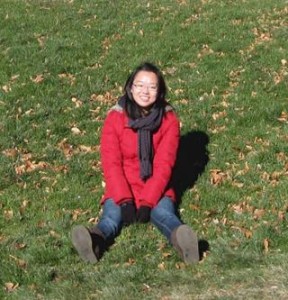 Assessing Post-CRP Landscapes in Response to the Growing Biofuel Production
Assessing Post-CRP Landscapes in Response to the Growing Biofuel Production
Wei Jiang
Wei Jiang is a PhD student in the Department of Ecosystem Science and Management at Penn State, working with Dr. Mike Jacobson. Her dissertation research studies land use change in the northeastern US. She applies economic theory to assess the socioeconomic factors driving land competition of food vs. biofuel. The CLD Graduate Research Award will provide Wei with travel and lodging funds for her upcoming conference this summer.
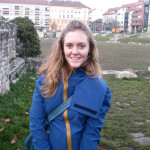 Agricultural Intensification and Soil Nutrient Cycling
Agricultural Intensification and Soil Nutrient Cycling
Megan Baumann
Megan Baumann is a first-year student in the Department of Geography’s 5-year M.S./Ph.D. program. Megan arrives to Penn State from Chicago, where she worked in realms of human rights law, urban and peri-urban vegetable production, and as a youth educator in agriculture and urban ecology programs. In the quest to combine biophysical and qualitative methods in political ecology work, the Center for Landscape Dynamics Award will allow Megan to engage in research and analysis of small farmers’ soil management techniques in regions of Central and South America that face rapidly changing climates and landscapes.
Spring 2015
 Local and Regional Food Systems, Soil Phosphorus, and Resilience in a Regional Farmer’s Market Network, New York City, USA
Local and Regional Food Systems, Soil Phosphorus, and Resilience in a Regional Farmer’s Market Network, New York City, USA
Russell Hedberg
Russell Hedberg is a PhD candidate in geography here at Penn State. His dissertation research examines soil fertility management in regional food systems in the northeastern US, with a particular focus on phosphorus management and the movement of phosphorus through the food system. Russell uses resilience theory as a framework for assessing the balance between farm yield and nutrient loading, and the effects of local food systems, farmer social networks, and biogeochemical factors in creating and strengthening more resilient and sustainable soil nutrient networks. The CLD grant has supported travel for participant recruiting and data collection, and to support soil enzyme and microbial analysis on participating farms.
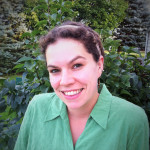 Shedding Light on the Success of Invasive Shrubs in Eastern Deciduous Forests: the Role of Extended Leaf Phenology
Shedding Light on the Success of Invasive Shrubs in Eastern Deciduous Forests: the Role of Extended Leaf Phenology
Erynn Maynard
Erynn Maynard is a second-year PhD candidate in the Ecology program at Penn State. She is exploring the changes that occur in northeastern deciduous forests with the increasing prevalence of invasive shrubs. These shrubs leaf out earlier and maintain their leaves later than native species, especially the overstory canopy. Erynn is quantifying this extended leaf phenology (ELP) on a regional scale using a citizen science campaign called Shady Invaders through the National Phenology Network. On a local scale, abiotic changes to light and temperature are being quantified. Additionally, she is exploring the costs and benefits of ELP in terms of physiological trade-offs with net photosynthesis and leaf nitrogen content. The CLD grant has been instrumental to this research through funding leaf nitrogen analyses and field supplies.
 Visual Impacts of Energy on the Pennsylvania Landscape
Visual Impacts of Energy on the Pennsylvania Landscape
Lacey Goldberg
Lacey Goldberg is a PhD candidate in Architecture with a focus in Landscape Architecture. Her research looks at the visual and scenic impacts of energy industries on the Pennsylvania landscape, particularly development and infrastructure associated with Marcellus shale natural gas extraction. The goal of this work is to look at historic trends of energy extraction practices on the landscape, create from those trends predictive models that will indicate where future visual impacts are likely to occur, and from that information, work with local communities to design and implement conservation measures to protect their valuable scenic and cultural amenities.
The CLD grant will fund travel to locations throughout Pennsylvania for photographic field work.The purpose of this project is to photograph the visual impacts to Pennsylvania State Parks, Wild Areas, and Natural Areas resulting from the Marcellus shale industry and the infrastructure needed to support it. Utilizing current GIS datasets detailing unconventional well activity I have identified fourteen locations that are in areas of dense Marcellus Shale development; nine in north-central Pennsylvania and five in western Pennsylvania. I intend to make two photojournalistic trips to document any visual impacts and changes to the landscape than can be seen in, around, or from these identified locations. These photographs will be georeferenced to integrate seamlessly into my current data and will contribute to a greater understanding of the visual impacts on a landscape scale and the landscape dynamics of shale activity on visual resources throughout Pennsylvania. I plan to present the findings from this study to the PA Wilds Design Guide Roundtable with PA Wilds community members, planners from Clearfield, Tioga, Warren Counties, the Pennsylvania Headwaters Resource Conservation and Development Council, the Pennsylvania Historic Museum Commission, and the Board of Historic Preservation.
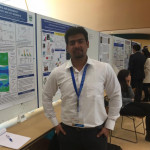 Landscape Conversion from Conservation Reserve Program to Perennial Grasses for Bioenergy: Impact on Soil Carbon
Landscape Conversion from Conservation Reserve Program to Perennial Grasses for Bioenergy: Impact on Soil Carbon
Debasish Saha
Debasish Saha is currently a post-doctoral fellow in the Department of Plant Science at Penn State. He completed his Ph.D. in Soil Science and Biogeochemistry from the Department of Ecosystem Science and Management at Penn State in summer, 2015. His dissertation work was supervised by Dr. Armen Kemanian and Dr. Jason Kaye. His research focused on landscape control of nitrous oxide (N2O) emissions, a potent greenhouse gas, during the transition from conservation reserve program grassland to perennial energy crops such as switchgrass and Miscanthus. Although his primary focus was on soil N2O emissions from energy crops, changes in soil carbon due to land use change was within the long-term goal of the project. The base-line information on profile soil carbon inventory in the landscape is important to quantify the soil carbon sequestration by energy crops over a time frame. The Center for Landscape Dynamics Award allowed him to analyze the soil samples and partially completing the initial soil profile carbon and nitrogen inventory of the experiment.
 Nutrient Runoff and Stream Ecological Condition: Linking the Soil and water assessment tool (SWAT) Model with Empirical Measures in an agricultural watershed
Nutrient Runoff and Stream Ecological Condition: Linking the Soil and water assessment tool (SWAT) Model with Empirical Measures in an agricultural watershed
Claire Regan Hirt
Claire Hirt is pursuing her Master’s in Geography at Penn State with Dr. Robert Brooks. Her thesis is focused on linking freshwater ecological integrity with the Soil and Water Assessment Tool (SWAT), a nutrient runoff model. She assessed stream health by collecting and identifying aquatic macroinvertebrates from an agricultural watershed in central Pennsylvania. In collaboration with modelers at the USDA Agricultural Research Service, various spatial and temporal scales of nutrient runoff were extracted from SWAT and compared with patterns of ecological integrity. The CLD grant provided funding to present this research at the Society for Freshwater Science annual meeting.
